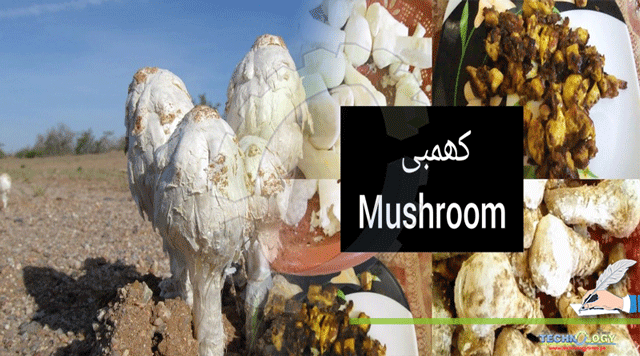Tharparkar (Sindhi, Urdu) is a district in Sindh province, Pakistan, with Mithi as its capital.

By Saadia Munir,Dr .H.U. Khan
The district is the to largest in Sindh, and it is home Pakistan’s largest Hindu population, Mostly Hindu live in Mithi, Islamkot, Chachro, Dahli, and Nagarparkar. Podaxis pistillaris is unique mushroom Podaxis pistillaris is a puffball relative that stands out. It was previously known as Lycoperdon pistillaris . Many people confuse it with the stalked puffball, however it is more closely related to the shaggy mane (Coprinus comatus) than the puffball. P. pistillaris is a member of the Agaricaceae family. The sporophore has an ellipsoid head supported by a slender stipe and resembles some mushrooms, however the sporocarp texture is very different (Hedawoo G.B, 2020) in several places, of Sindh (sporophores) have been eaten as food in the month of July to August. Fresh Podaxis pistillaris were collected from their natural habitat, the specimens were preserved in wet and dry powdered form.The rural people of district tharparkar and Mithi in collected commonly known as a traditional practice marketing . It is locally known as ‘Khumbi’. Since ages they are using it to make dishes and for medicinal purposes too. Most of the people of rural areas especially elders as well as children were aware about its benefits and applications.
As discovered during the current investigation, is known to have a variety of applications among villagers, such as in Tharparkar, where the spore mass of this mushroom is dusted over wounds to heal them and is also given to people with bone-cracks and pregnant women due to its high calcium content (Panwar and Purohit, 2002a). In Australia, it is reported to be used as a fly repellent and and also by old men to darken the white hair .This mushroom is fried in Sindh (Pakistan) for consumption, whereas it is cooked as a vegetable in North India. Aside from that, there are numerous other ways to cook this mushroom, just like any other edible mushroom. (Jordan and Wheeler 1998; Verma and Rai 2005). In Pakistan, they are dried and stored for almost a year in plastic or glass containers for use during the off-season. Traditional herbal doctors also prescribe it for diabetics and cardiac suffers . Recent research has revealed that has potent antibacterial (Panwar and Purohit, 2002a) and antifungal (Panwar and Purohit, 2002b) activity against human pathogenic microorganisms (Panwar., 2002b). ). It is sold in the market at various prices like, in Sindh (Pakistan) 1 kg has been documented to cost about 100 to 150 Pakistani Rupees, In India its cost ranges from 120/- to 170/- per Kg (Personal information). As was observed during the collection of khumbi (mushroom), is known to have various applications among villagers like in Tharparkar the spore mass of this mushroom is dusted over the wounds to heal them and also given to people with bone-cracks and to pregnant women due to high calcium content (Panwar and Purohit, 2002a). In Australia, it is reported to be used as a fly repellent and and also by old men to darken the white hair . In Sindh (Pakistan) people fry this mushroom for consumption while in North India it is cooked as a vegetable. Besides this, like any other edible mushrooms there are many other formulations to cook this mushroom (Jordan and Wheeler 1998; Verma and Rai 2005). In Pakistan these are preserved dry in plastic or glass containers for almost one year for use during off season. It is also recommended for diabetic and heart patients by the traditional herbal doctors. Recent studies have shown that exhibits very strong antibacterial activity against human pathogenic bacteria and (Panwar and Purohit, 2002a) and anti-fungal activity agianst (Panwar ., 2002b). Podaxis pistillaris has a significant nutraceutical value. It is high in proteins, amino acids, carbs, and low in fat. It is an essential antioxidant source because to the presence of secondary metabolites such as phenols, flavonoids, steroids, carotene, and lycopene. (Hedawoo, GB ,2010). It has been used to treat skin illnesses, wound healing, anti-bacterial properties, and as an effective sunscreen against sunburn and inflammation. This fungus is utilized as an edible (nutraceutical) medicinal, and cosmetic resource in several nations, and it has the potential to be employed as a probiotic. P.pistillaris is regarded as a culinary or gourmet food, and has been consumed in countries such as Afghanistan, India, Iraq, Pakistan, Saudi Arabia, Yemen, and Mexico. (Medina-ortiz,2017).